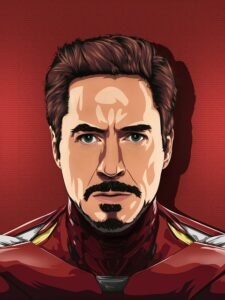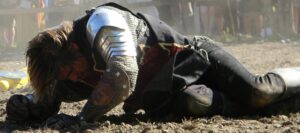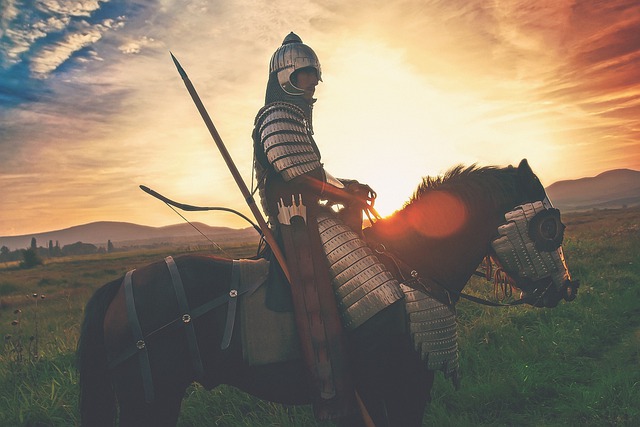A dynamic character is a term used in literature to describe a character who changes or grows throughout the story. These characters are not static but, instead, are constantly evolving. By constantly evolving, they become more interesting and three-dimensional than flat characters, who remain the same from beginning to end.
This blog post will discuss what makes a dynamic character and explore some examples from popular books and movies!
The definition of a dynamic character
A dynamic character is usually the protagonist or main character of a story. They go through an internal journey, experiencing personal growth or change. This type of development is essential to creating a well-rounded and relatable character. Without it, readers may find it difficult to connect with or care about the character.
What is a Dynamic Character?

There are several methods that authors use to show a character’s growth. One is through the character’s actions and choices. For example, a dynamic character may start selfish but eventually learns to put others first. Another way is by showing how dynamic characters change their thoughts and attitudes. For example, a character who is initially prejudiced may have a change of heart after getting to know someone from a different group.
It’s important to note that not all characters need to be dynamic. In some stories, the focus is on other elements, such as the plot or setting. However, in most cases, having at least one dynamic character helps to make the story more interesting.
There are many different types of dynamic characters, but some common examples include the following:
– The protagonist: This is the story’s main character and is usually the one who goes through the most change. For example, in the novel To Kill a Mockingbird, Scout Finch starts as a young, naïve girl who doesn’t understand the harsh realities of the world around her. However, by the end of the story, she has grown up and gained a better understanding of both people and society.
– The antagonist: This is the character who opposes the protagonist and usually represents the main source of conflict in the story. For example, in the novel The Hunger Games, President Snow is the antagonist who constantly tries to keep Katniss Everdeen and the other citizens of Panem under his control.
– The minor character: This character doesn’t have a significant role in the story but helps to move the plot forward or reveals important information about other characters. For example, in the novel To Kill a Mockingbird, Calpurnia is a minor character who provides valuable insight into the Finch family and their way of life.
Examples of famous dynamic characters from books, movies, and TV shows
– One excellent example of what makes a character dynamic is in Leo Tolstoy’s book Anna Karenina. The main characters, Anna and Levin, have dramatically different personalities and lifestyles, but their interactions ultimately drive the plot forward.
– Another excellent example is in the film The Dark Knight between Batman and the Joker. Even though they’re on opposite sides, their interactions are some of the most compelling and thrilling parts of the film.
– A classic example of character dynamic in books can be found in the Harry Potter series by J.K. Rowling. In the first book, Philosopher’s Stone, Harry is an orphan who has just been accepted to Hogwarts School of Witchcraft and Wizardry. He is a shy, introverted character who struggles to make friends and fit in. Over the course of the series, however, he becomes more confident and learns to trust his friends and work together with them to defeat Voldemort.
Other famous dynamic character examples include:

– Arya Stark from Game of Thrones. There are many things that make Arya Stark a dynamic character. For one, she is fiercely independent and doesn’t let anyone stand in her way – including her siblings. She is also constantly evolving; she starts the show as a young girl eager to please her father and brothers, but over time she becomes more hardened and detached from the world around her. And finally, Arya is unafraid to fight for what she believes in, even if it means going up against overwhelming odds. All of these qualities make her an interesting and compelling character to watch.
– Michael Scott from The Office US. Michael Scott is a dynamic character because of his ability to change and adapt. No matter the situation, Michael always manages to make the best of it by using his unique sense of humour. He’s also a great motivator, and he truly cares about his employees. Even though Michael can be insensitive at times, you can’t help but appreciate his zest for life. He’s always up for a challenge and he’s not afraid to take risks. Above all, Michael Scott is an entertaining character who keeps viewers engaged with his unpredictable antics.
– Tony Stark from Iron Man, is a billionaire playboy who turns into a superhero after being kidnapped and forced to build an armoured suit to save his life. What makes him dynamic? He starts as someone who is only interested in himself but then undergoes a huge transformation after his time in captivity. He learns to care about others and becomes a superhero as a result.
– Luke Skywalker from Star Wars is a farm boy who dreams of adventure and joins the rebel alliance to save the galaxy from the evil empire. What makes him dynamic? He starts as a simple farm boy with no experience of the wider galaxy but by the end of the story, he has become a mighty Jedi Knight.
These are just a few examples of dynamic characters and what they can go through. There are many more examples out there in fiction and real life. What’s important is that you can see how each character changes and grows over time.
What is the purpose of a dynamic character in a story?

A dynamic character is one who undergoes significant change or growth over the course of a story. They are not the same at the beginning as they are at the end, and their transformation can be emotional, physical, or both.
Dynamic characters are interesting to read about because they offer a new perspective on life. They make us see things in a different light, and they help us learn more about ourselves and others. Plus, watching a character struggle and eventually overcome adversity is always satisfying.
In short, they are there to add depth and dimension to a story. Dynamic characters make things more interesting and can help readers or viewers connect with the characters on a deeper level.
The difference between dynamic and static characters
A static character is one who does not change throughout the course of the story, while a dynamic character does change. Static characters are generally more archetypal, while dynamic characters are more fleshed out. For example, in The Catcher in the Rye, Holden Caulfield is a static character, whereas his sister Phoebe is a dynamic character.
How to create a believable and compelling dynamic character
Creating a believable and compelling dynamic character is not an easy task. You need to be able to create a relatable character who still has room to grow. In addition, this character needs to be someone the audience can invest in and see themselves in.
A few things to keep in mind when creating a dynamic character:
– Make them relatable: they should have flaws, insecurities, and weaknesses.
– Give them a goal: what do they want? What are they fighting for?
– Make their arc believable: ensure that their journey makes sense and is not too far-fetched.
Keep these things in mind, and you’ll create a dynamic character that will resonate with your audience.
Tips for writing compelling scenes with dynamic characters

Create realistic conflict. Conflict is what makes scenes exciting to read. Try to think of ways to put your characters in difficult situations that they need to struggle their way out of. This will make for more dynamic scenes with lots of tension and suspense.
Don’t be afraid to let your characters fail spectacularly sometimes. It’s important for your readers to feel that your characters are real people who make mistakes and suffer the consequences just like everyone else.
Writing prompts featuring dynamic characters
– Write a scene where a normally very shy character has to give a speech in front of a large crowd.
– Write a scene where a character who is usually very confident has to face their fear of heights.
– Write a scene where a normally very closed-off character has to open up to someone they trust about their feelings.
Conclusion
Conclusion paragraph: A dynamic character is essential to any good story. By understanding what makes a dynamic character compelling and believable, you can write scenes that keep your readers engaged until the end. Try using some writing prompts and practice to write dynamic characters and scenes.
If you’re working on your first novel and are looking for more help with your writing, please check out my other articles at https://ullahakanson.com/blog/
Thanks for reading!
Ulla

